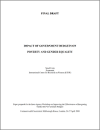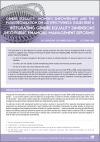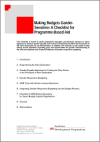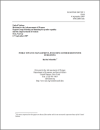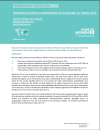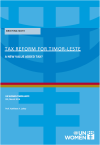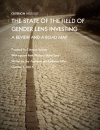This paper provides guidance on how to make Public Finance Management (PFM) reforms gender responsive. It presents an overview of PFM reforms and explains how and why they are important to the achievement of gender equality outcomes.
FOUND 30
In this paper, Simel Esim (2000) focuses on expenditure and revenue instruments of fiscal policy as strategic entry points for engendering macroeconomics. The paper also includes a discussion of the potential implications of monetary policy and overall fiscal stance on poverty and gender equality.
This paper by Simel Esim (2000) explores the revenue side of gender budgeting. Esim also discusses policies and suggests strategies for gender-sensitive budgeting.
This Issues Brief published by the DAC NETWORK on Gender Equality in October 2010 is on the integration of a gender equality perspective into public financial management (PFM) in partner countries. It suggests ways of using the techniques of gender-responsive budgeting (GRB).
This checklist is meant to assist programme managers and thematic advisors in donor agencies to advance gender equality and women's empowerment within the framework of the Paris Declaration on aid effectiveness.
This paper explains what GRB is, what GRB work has help achieved and how it can further contribute to achieving gender equity and equality.
UN Women Policy Brief: Reforma Impostu Rendimentu no Konsumu ba Timor-Leste
This report (2015) tells the history of the field of gender lens investing over the last five years and outlines a roadmap to the future, defining the critical areas of focus for resources and attention.
This book aims to contribute to the evolving understanding of public expenditure management as a political, rather than a purely technical, process. In particular, it explores the ways in which a rights approach can contribute to strengthening pro-poor voice and outcomes in budget processes.

